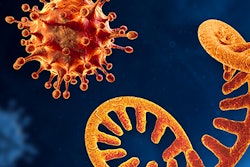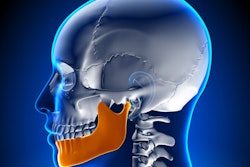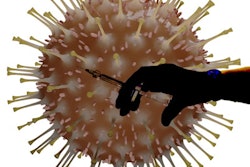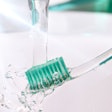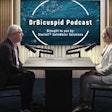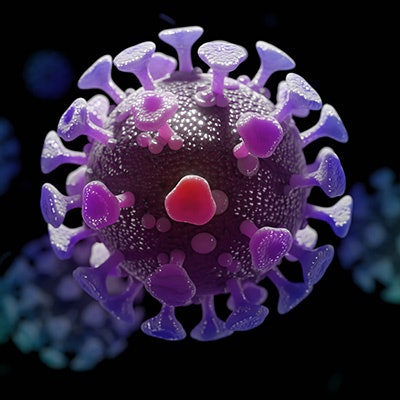
The risk of exposure to infections such as SARS-CoV-2 from aerosol-generating procedures (AGPs) appears low in open plan clinics where there are several feet of distance between bays, according to a study published online January 6 in the Journal of Dentistry.
Most settled aerosols are detected within a few minutes, which shows that cleaning the area after procedures may be an appropriate mitigation factor. Also, dental suction is beneficial in preventing the spread of infections, according to the authors.
"The cross-infection risk from conducting AGPs in an open plan clinic environment appears to be small," wrote the group, led by Dr. Richard Holliday from Newcastle University School of Dental Sciences in the U.K.
Germ-filled aerosols
Dental procedures generate aerosol and splatter contaminated with saliva and blood that may transmit pathogens, including SARS-CoV-2. Unmitigated procedures also have the potential to deposit contamination at large distances.
Because evidence has shown that the novel coronavirus may remain viable and infectious in droplets for several hours and on surfaces for a few days, dental teams have been encouraged to implement mitigation practices to limit the spread. Teams have been encouraged to stop using ultrasonic scalers and drills, practices have staggered appointments, and many have implemented robust cleaning regimens. Experts outside the field also have put forth other innovations, including an open-faced, disposable helmet that is connected to an air filtration pump and can be worn by patients.
Understanding risk of infection
The researchers conducted the study to get a better understanding of dental aerosol-generating procedures and how cross-contamination could be a risk for spreading COVID-19. The fluorescent yellowish-green dye tracer fluorescein, which is often used in forensics to detect latent blood stains, was used to analyze the distance and location to which droplets and saliva traveled from a patient's mouth during an aerosol-generating procedure performed on a dental mannequin. A variety of procedures were performed to determine the effects of suction and ventilation in open plan clinics and close settings, the authors wrote.
Cross-infection risk from dental procedures may be small in open plan clinics with distant bays, which is a head-to-head chair distance of at least 5 m apart. Holliday and colleagues found that 99.99% of the splatter detected stayed within the procedural bay area. Few additional contaminated aerosols settled onto surfaces after 10 minutes. Therefore, this is the ideal time to clean up after an aerosol-generating procedure, according to the authors.
Contamination in the bay was reduced by 53% when medium-volume dental suction of 159 L/min air was used. It also cut contamination in other areas by at least 81%. The fluorescein reading was less than 0.0016% when medium-volume suction was used, indicating low levels of contamination.
Not without limitations
The study had several limitations, such as the researchers relying on aerosol and splatter passively settling onto filter papers. Active sampling techniques, like air samplers, should be used in future studies. Nevertheless, the sample strategy that was used enables testing of numerous locations at the same time and mapping the contamination's distribution, they wrote.
Future studies will explore how long aerosols remain suspended in air and analyze several common dental procedures and methods of controlling splatter, which will help limit exposure to infections.
Dental teams should continue to mitigate risk by doing environmental cleaning, using dental suction, and providing ventilation.
"Contamination is likely to be minimal in open plan clinics at distances of 5 m or more," the authors concluded.




